The most vibrant city of the most vivacious state, this city is synonymous with beaches, music, parties, a whirlwind of culture and specially monuments in Rio de Janeiro are worth visiting. It is the epicentre of beach culture around the world, an exotic combination of laid-back and energetic, all coloured in with the world’s most popular carnival, the Rio Carnival. The former capital of Brazil, Rio de Janeiro is a tourist hotspot, home to many cultural attractions as well as world-renowned monuments. The most famous of them all is the Christ the Redeemer statue, one of the seven wonders of the world, situated atop the Corcovado hill and presenting you with one of the best panoramas of the city. While walking tours might show you various spots of important Rio heritage, there is no better way to experience local culture than walking through the colourful neighbourhoods or being a part of the annual Carnival celebrations, a burst of joy, colour, music and dance that have made Rio what it is. Here in this blog we will explore some of the important monuments in Rio de Janeiro:
List of Rio de Janeiro Monuments and Statues
1. Christ the Redeemer

From the 709-meter summit of Corcovado, overlooking the city, the giant statue of Christ is almost as widely recognized a symbol of Rio as the distinctive shape of Sugarloaf. The world-famous landmark and popular monument in Rio de Janeiro was erected between 1922 and 1931, financed almost entirely by contributions from Brazilian Catholics.The Art Deco statue was built by the Brazilian engineer Heitor da Silva Costa and created by Polish-French sculptor Paul Landowski, in collaboration with the French engineer Albert Caquot. Made of reinforced concrete and soapstone, the figure itself is 30 meters tall with arms stretching 28 meters; it weighs 635 metric tons. Inside its eight-meter-high base is a chapel, where it’s not uncommon to find weddings and baptisms taking place. The Corcovado rack railway chugs from Rua do Cosme Velho up the 3.5-kilometer track to the statue, through the Tijuca National Park. You can see this monument without the usual crowds and by early morning light on a guided Early Access to Christ Redeemer Statue with Optional Sugarloaf Mountain Tour. A tour upgrade includes a cable car ride up Sugarloaf Mountain for more stunning views.
Address: Christ the Redeemer, Rio de Janeiro, Brazil.
Read More: Monuments in Bulgaria
2. Monumento Aos Prachinas

This stunning monument in the heart of the city is dedicated to the Brazilian soldiers who lost their lives during WWII. This national monument in Rio de Janeiro comprises two imposing columns, standing either side of the Tomb of the Unknown Soldier. The changing of the guard ceremony takes place on the first Sunday of every month, and behind the monument you will find a museum which is home to medals, uniforms and paraphernalia that once belonged to Brazilian soldiers.
Address: Rio de Janeiro, Brazil, BR
3. Catedral Metropolitana
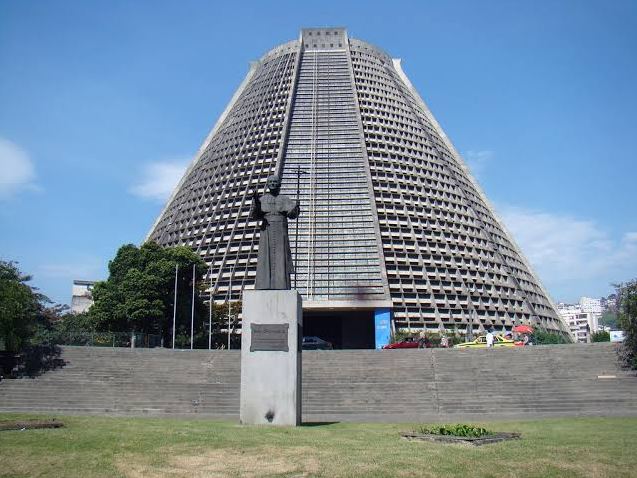
Architect Edgar Fonseca, who took his inspiration from Mayan pyramids and designed Rio’s new cathedral. Built between 1964 and 1979 and often referred to as the New Cathedral to distinguish it from its immediate predecessor, Nossa Senhora do Carmo, the church seats 5,000 in its 96-meter interior. Four stained glass windows rise 64 meters from the floor to light the interior with brilliantly colored natural light. At night, this ancient monument in Rio de Janeiro is lit from within, a bright beacon in the central skyline.
Address: Av. Chile 245, Rio de Janeiro.
Read More: Most Visited Monuments in Brazil
4. Maracanã Football Stadium (Estádio do Maracanã)
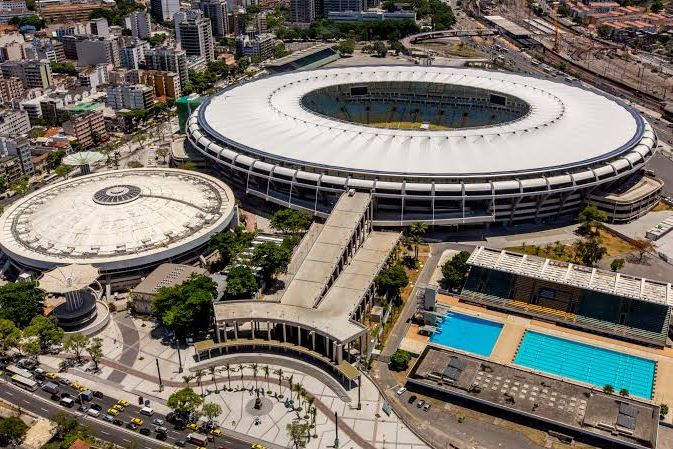
Until recently the Maracanã Football Stadium was the largest football stadium in the world. Officially inaugurated during the 1950 World Cup, this all-encompassing stadium features a capacity to hold 100,000 cheering fans. Owned by the Rio de Janeiro State Government, major football clubs like Flamengo, Fluminense, Botafogo and Vasco da Gama play their matches here. Fans of legends like Ronaldo, Pele, Romario, Carlos Alberto and Nilton Santos will surely love to pay a visit to the Mecca of Football; the Maracanã Stadium. If you are lucky enough, it is possible to catch one of your favourite players in action. The Maracanã Football Stadium had hosted the 2014 World Cup and the 2016 Summer Olympics Opening Ceremonies and is now considered as one of the iconic landmarks in Rio de Janeiro.
Address: Av. Pres. Castelo Branco, Portão 3 – Maracanã, Rio de Janeiro, Brazil.
5. Theatro Municipal
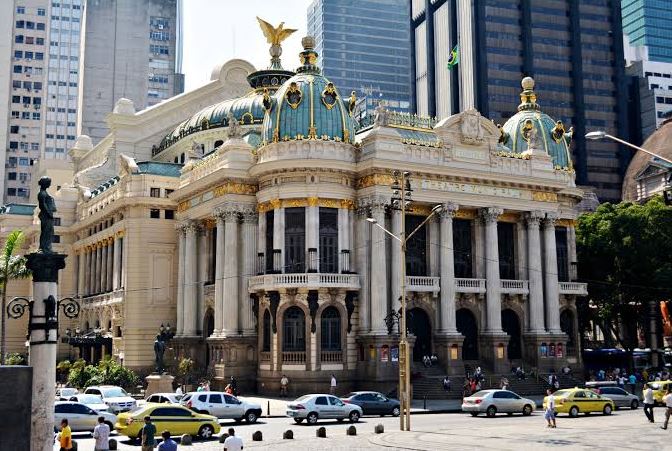
The grand Municipal Theater, built in the early 20th century, was inspired by the Paris Opera of Charles Garnier, and its interior is even more ornate and luxurious than the dramatic towered façade. Highlights are the sculptures by Henrique Bernardelli and paintings by Rodolfo Amoedo and Eliseu Visconti, as well as the drop curtain, the proscenium frieze, and the ceilings. There are guided tours, some in English, or you can attend classical concerts and ballet performances here in this historical monument in Rio de Janeiro.
Address: Praça Floriano, Rio de Janeiro
Read More: Places to visit in Berlin Jan 2020
6. Quinta da Boa Vista
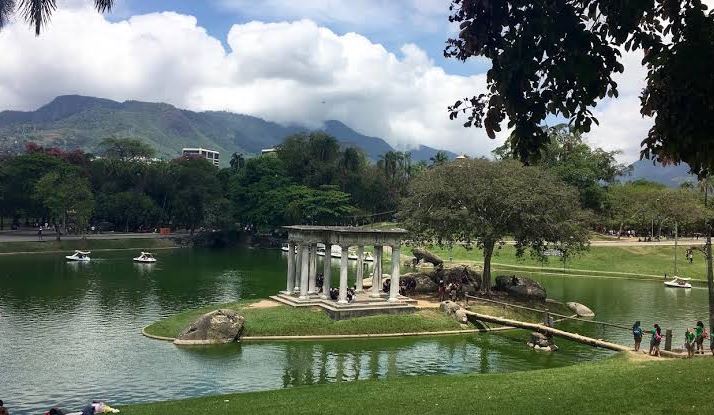
The gardens, villas, and imperial palaces of São Cristóvão are now public parks and museums, the foremost of which is Quinta da Boa Vista. From 1808 to 1889, the palace was the residence of the royal and the imperial family and was later altered and rebuilt as the Palácio de São Cristóvão. This heritage monument in Rio de Janeiro houses the National Museum, which has the largest zoological, botanical, ethnographic, and archaeology collections in the country, totaling more than a million items. In the expansive park are gardens with lakes, woodlands, and caves, which you can reach via a miniature railway. Also inside the park is a zoo with more than 2,000 species of mammals, birds, and reptiles from Brazil and around the world.
Address: São Cristóvão, Rio de Janeiro
7. Sugarloaf

Sugarloaf
The famous landmark in Rio Janeiro is the rock peak of Sugarloaf, towering 394 meters above the harbor. It sits on a point of land that projects out into the bay and wraps around its harbor, and is connected to the city by a low strip of land. You can take a cable car from Praça General Tibúrcio to the top of the Morro da Urca, a lower peak from which a second cableway runs to the summit of the Sugarloaf. From here, you can see the entire mountainous coast that rings the bay and its islands. Below, the 100-meter Praia da Urca beach is near the location of Rio’s original nucleus, between the Morro Cara de Cão and the Sugarloaf. On Cara de Cão are three forts of which the 16th-century, star-shaped Fort São João is open to the public.
Address: Sugarloaf Mountain – Urca, Rio de Janeiro – State of Rio de Janeiro, Brazil.
Read More: Monuments of Zurich
8. Tijuca National Park

Tijuca National Park
Tijuca National Park protects the Tijuca Forest and several viewpoints overlooking the city and surrounds Cristo Redentor, the giant-sized statue of Christ on Corcovado. To explore the park, you can leave the train up to Corcovado at a midpoint and follow the road through the forest. The 3,300-hectare Tijuca National Park is one of the world’s largest forests and natural monuments in Rio de Janeiro was planted in the late 1850s on land that had been destroyed by coffee plantations. Most of the trees are native species and provide habitat for Capuchin monkeys, quatis (Brazilian raccoon), colorful toucans, hawks, brilliant blue butterflies, and many other species of wildlife.
Near the station of the Corcovado railway is Largo do Boticário, one of Rio’s most picturesque squares, surrounded by colonial-style houses. From the pagoda-style pavilion at Morro da Vista Chinesa, 380 meters above the shore, are views of the Municipal Park, the Botanic Garden, and a long stretch of the south coast. There are more views from Mirante Dona Marta, a viewpoint on a spur of rock above Botafogo Bay. Several waterfalls drop from the forest springs, including the 30-meter Cascatinha Taunay. Set in extensive gardens near the park is the Museu do Açude, with the valuable porcelain collections of the West India Company; old views of Rio de Janeiro by Brazilian and foreign artists; and azulejos, traditional Portuguese tiles from the 17th through 19th centuries.
Address: Estr. da Cascatinha, 850 – Alto da Boa Vista, Rio de Janeiro – RJ, 20531-590, Brazil.
9. São Bento
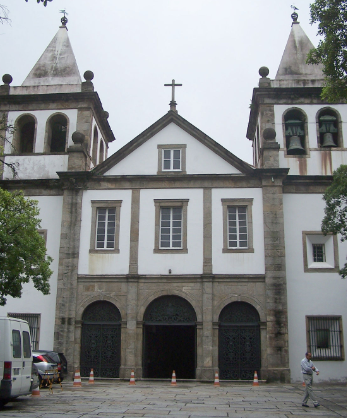
São Bento
On the hill just above the harbor are the church and monastery of São Bento, one of the finest Benedictine complexes and famous monuments in Rio de Janeiro. The original 1617 church was without aisles until it was enlarged in the second half of the 17th century by the addition of eight side chapels. The finest artists of the Benedictine order were involved in decorating the interior. The exuberant carving that covers the walls and ceiling was mainly the work of a monk named Domingos da Conceição, who was also responsible for the figures of St. Benedict and St. Scholastica on the high altar. The choir chapel has silver work by Mestre Valentim and 14 paintings by Ricardo do Pilar, a monk who was the foremost Benedictine painter of colonial Brazil. His masterpiece, Senhor dos Martírios (Christ of the Passion), is in the sacristy of the monastery.
Address: São Bento, State of Paraíba, Brazil
Read More: Monuments of Botswana
10. Nossa Senhora do Carmo and Monte do Carmo

Nossa Senhora do Carmo and Monte do Carmo
The religious monument in Rio de Janeiro named Nossa Senhora do Carmo was the Capela Real (Royal Chapel) from 1808 to 1889 and the cathedral until the modern one replaced it in 1976. Connected to it by a passage is a second Carmelite church, Monte do Carmo, begun in 1755. Highlights are its Baroque façade, stone doorway, and the white and gold carving by Mestre Valentim in the Chapel of the Novitiate. The 1761 former cathedral is richly decorated with carving and has a silver high altar. In a side street is the chapel of Nossa Senhora do Cabo da Boa Esperança (Our Lady of the Cape of Good Hope), the last surviving street oratory in the city.
Address: Rua 1 de Março (off Rua do Ouvidor), Rio de Janeiro.
11. São Francisco da Penitência
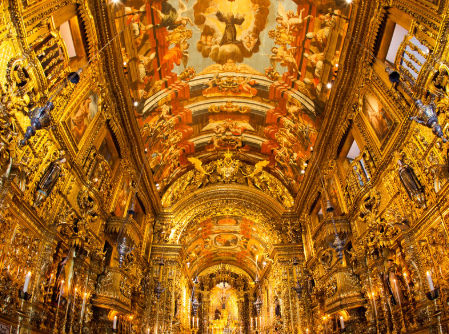
São Francisco da Penitência
The Igreja da Ordem Terceira de São Francisco da Penitência is divided into three sections with separate entrances, and the simple façade of this church belies the riches within. The interior of this old monument in Rio de Janeiro, which was begun in 1657 and completed in 1773, is a riot of gilded wood carving. Among those who contributed to the decoration of the interior were Manuel and Francisco Xavier de Brito, two leading Portuguese sculptors and woodcarvers. They had very similar styles, known as Brito, using decorative forms that influenced Aleijadinho and other masters of Brazilian Baroque. The ceiling of the choir has the earliest trompe-l’oeil painting in Brazil, completed in 1736, the work of Caetano da Costa Coelho, who later painted the ceiling of the nave in the same style.
Address: Rua da Carioca, Rio de Janeiro
Read More: Monuments in Brunei
So far we have discussed the famous historic buildings and monuments in Rio de Janeiro. I hope you might have gathered some information related to it. If you are planning your trip to Venice then kindly go through our other articles as well which will be quite beneficial for you.
The post Most Visited Monuments in Rio de Janeiro, Brazil | Top 10 Historical Sites in Rio de Janeiro appeared first on World Tour & Travel Guide, Get Travel Tips, Information, Discover Travel Destination | Adequate Travel.